In this 2nd part of the prosperity series, we dive into the the past, present, and future of industrialization and the accompanied urbanization of Somalia. To get an overview of this series, see the overview article here.
Industrialization and urbanization are key aspects of a country’s development, leading to economic growth and social change. This article aims to provide an insight into Somalia’s industrial revolution before the civil war, the industries currently present in Somalia, and the accompanied urbanization. Before diving into Somalia’s industries, lets first get a overview of industrialization in general.
History of Industrialization
It is widespread in western education that industrialization began in the late 18th century in England and spread during the 19th century to Belgium, Germany, Japan, the United States and France. The Islamic industrial history is disregarded, even though it was in place 10 centuries before the western industrial revolution.
Islamic industrialization
The Islamic industries stretched from China to Spain during the 7th-8th centuries. Water-wheels and windmills provided power to industries that mass produced steel, paper, petroleum, glass, textiles, agriculture, ship, mineral extraction, metal, and chemical products. In an article titled (Filling the Gap in the History of Pre-Modern Industry), Professor Salim Al-Hassani writes: “Industrial production, manufacturing, and mass production for both vast urban populations and for export, relying on machinery powered by wind and water, had existed nearly ten centuries before the 18th century English Industrial Revolution.”
18th century industrialization.
Ten centuries after the establishment of the Islamic industries, Europe became industrialized, starting with Britain, then followed by the rest of Europe, United States and much of the world. Western industrialization is divided into two periods, the 18th-19th century and the late 19th-20th century which introduced the rapid advances in the steel, electric, and automobile production. The first period began with the British textile industry. Thousands of miles of canals and roads sprung up across Britain to assist the growth of the industrial revolution. Also, steam-powered trains became much more popular and helped transport goods across Europe.
Benefits and consequences of Industrialization
The industrial revolution of both the 8th and 18th century had many benefits – especially the 18th century western industrialization ushered in modern technologies solving many practical problems. It came with economic benefits which changed society and introduced the living standards we are familiar with today. These benefits included: Eradication of unemployment and poverty, development of cities, economic growth and development of a country, large-scale manufacturing of products that are available to consumers at significantly lower prices, time and labor saving, rise in people’s living standards, goods available in abundance and variety, increased jobs and improved medical care.
Even though the industrial revolution brought many positive changes that continue to benefit our lives to this day, it also came with many downsides. The extremely rapid changes in production saw new problems arise. Inner-city pollution saw an abrupt rise from factories and increased population as more workers moved to the cities. Living conditions in some places plummeted; sewage and waste flooded the streets and rivers. Employers used children as companies tried to cut costs and become more profitable to stay ahead of their competitors. Respiratory illnesses and environmental harm which continues up to the present time came about. Industries were powered by burning coal, and big industrial cities began pumping vast quantities of pollution into the atmosphere. With great urban development however, these issues can be avoided today.
Somalia’s industrial revolution
In the past, Somalia’s economy relied almost entirely on agriculture and livestock. However, the desire for economic diversification and modernization prompted the country to embark on its industrialization journey. The industrial revolution in Somalia began in the mid-20th century when the government started investing in infrastructure, manufacturing, and technological advancements.
The Siad Barre regime began after the bloodless military ‘coup d’état’ takeover in 21 oct. 1969 – a week after the assassination of the previous president, Abdirashid Ali Shermarke. Siad Barre, who commanded this military became the head of the new government called the “Supreme Revolutionary Council” and this was the precursor of the Industrial Socialist Revolution of Somalia. The goal, unsurprisingly, was to establish a healthy Economy in Somalia, in which industry and land was nationalized.
Before the creation of industries in Somalia, craftsmen using wood, stone, ivory, metal and leather would produce only for their local area. The needs of the Somali people were entirely met by costly imports. However, after the revolution, these craftsmen would work together to create an entire economy, and exchange their skills, and sell to a broader market.
During the industrial revolution, Somalia had a highly motivated workforce, who were willing to go above and beyond for the success of the country.
During this time, 70% of the population was still nomadic or had agricultural lands. Livestock was the main resource accounting for 80% of total exports and provided 60% of the population with a living.
Besides livestock, a number of great industries came up during this period. Some of them are listed below, and we have primarily used two important documents detailing the industrial revolution as references: 1) European Union, June, 1974: Conditions for the setting up of industrial undertakings – Somalia, and 2) World Bank 1987, Somalia Industrial Policies and Public Enterprise Reform. The exchange rate in the WB document was between 100-200 Somali shillings per 1 US$ in 1987. Below are three outtakes from the reports where you can see the different industries active in Somalia in the 1970s-1980s, the labour force, and the economic sector.
(click to open)
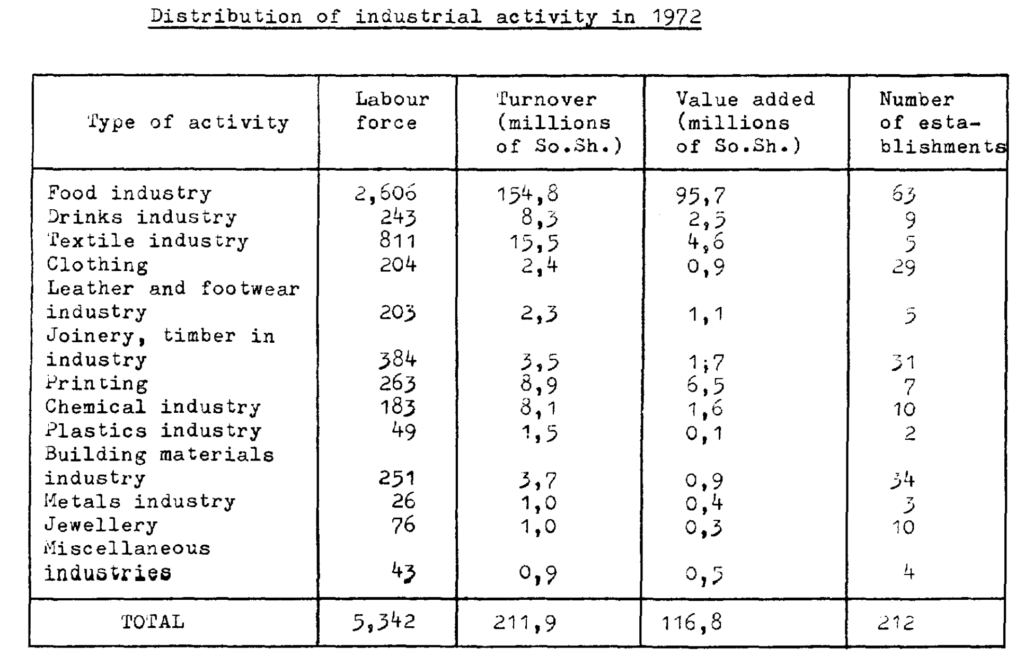
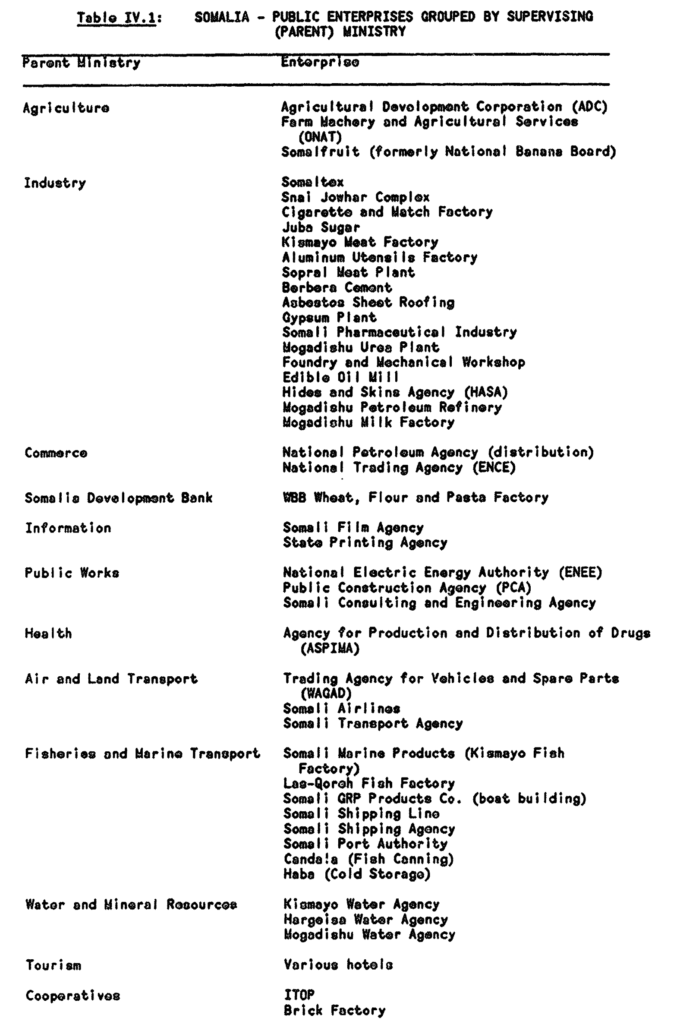
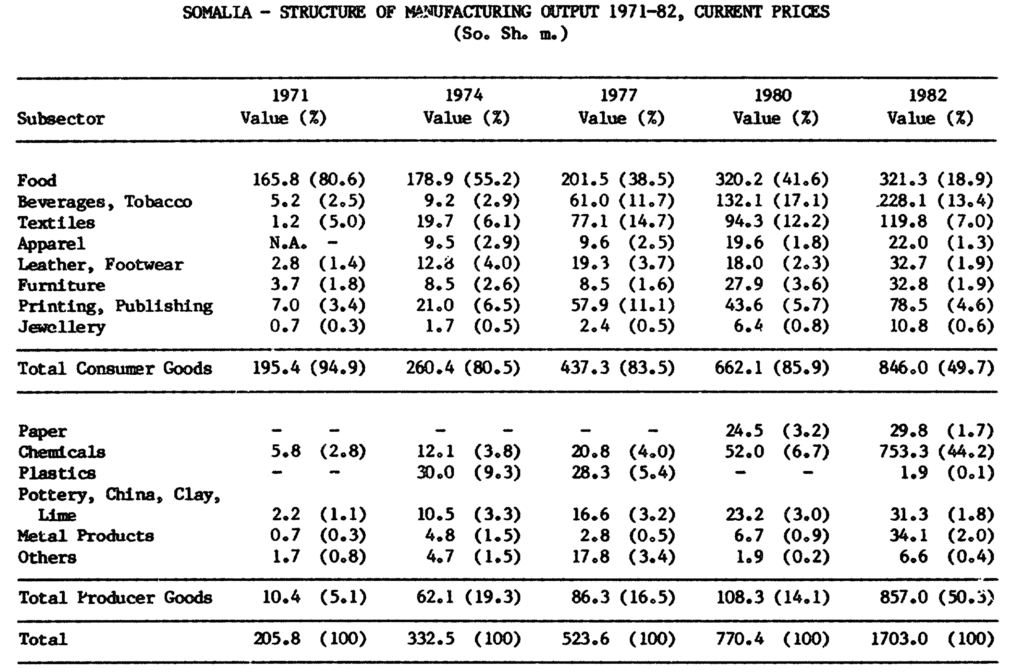
The textile and leather industry:
Balcad Somaltex factory
The modern SOMALTEX textile factory was built during the socialist revolution. Similar factories already existed in Egypt and Sudan. The aim was: self-sufficiency for Somalia in bleach- and dyed- cotton fabrics, which was eventually reached with the production of 14 million meters per year.
This meant that the government no longer needed to spend money on textile imports. The initial capital came from both Somalia and 30% from West Germany. The factory only employed 240 people. The environment in Balcad was ideal for cotton plantation, which could supply the local markets. At its peak, it was among the best equipped textile plants in Africa! Herein lies a lesson – look at what Somalia imports the most, and ask, ‘could we produce this instead?’.
Besides SOMALTEX, there were also 4 private tanneries, two of which also make shoes in Mogadishu and Barawe.
Food industry
It wasn’t just the textile industry, the food industry was growing rapidly too. Here are some examples of different establishments:
- Sugar mill in Jowhar: Owned by “National Industrial Agriculture Company” (SNAI), and nationalized in 1970, this sugar mill employed 1800 and up to 5500 people. It’s production was 50,000 tonnes per year.
- Two meat canneries:
- One at Kismayo (state company). Production capacity: 170 head of beef per day. Staff: 500.
- One in Mogadishu (private company). Production capacity: 150-200 head of beef per day. Staff: 300.
- Three fish canneries:
- The Kandala unit (81 employees) and Habo unit (151 employees) – both private companies, producing tins of tuna in oil and plain. The company dates from 1930.
- One unit at Laasqoray: State owned company dating back to 1969, funded through a Soviet loan with an investment of 42 million Somali Shillings. This one could produce 7000 tonnes of canned tuna.
Staff: 180
- Dairy company in Mogadishu: This state-owned company was opened in 1966 with an investment of over 1 million Somali shillings. They processed many tonnes of milk every hour with a staff of 81 people.
- Fruit juice cannery (IEOR) at Afgooye, production started in 1973.
- Five soft drinks units: 4 in Mogadishu and 1 at Barawe. Staff: Ca. 200 people.
- Itop factory at Afgooye: Packaging fruits and vegetables for export. Especially tomato Paste and Fruit Canning Factory. The factory had the perfect positioning between the production sites in the shabelle region and the Mogadishu Harbor.
- Wheat, Flour and Pasta factory in Mogadishu: Somali Maize based, aimed for self-sufficiency as well.
Other industries
Below are a mix of different Somali industries, many Somalis have heard about.
- Hides and Skins Agency: They had monopoly on purchasing all raw hides and skins in Somalia and supplied to local tanneries as well as exported to other countries. Besides, they also imported a lot of materials for the processing of the raw hides and skins. They employed 700 people, incl. 28 graduate engineers. 500 worked in the plant, 200 were involved in collection and trading. They had the following industrial facilities:
- Mogadishu leather and shoe factory
- Hargeisa, Burco, Kismayo tanneries
- Petroleum refinery in Mogadishu: It was originally a joint collaboration between the Somali and Iraqi governments, with Iraq providing financing. Iraq withdrew in 1983, and the small facility became fully owned by the Somali government. Despite a few million below capacity, it’s maximum production was 263,000 tons of processed Arabian light crude oil in 1980. There were many issues though; unqualified staff, bad maintenance, corrosion, difficulty obtaining spare parts, low demand.
- The Foundry and Mechanical Workshop: Established in 1975 to develop metallurgical and engineering industries in Somalia. Supported by UNIDO, it aimed to serve as a training facility and center for product development. It had a small foundry and machine shop with 90 employees, incl. 9 young engineers from local universities. The main products of the plant include steel tanks, hand pumps, various cast iron parts, hand tools, agricultural implements, and spare parts for other industrial facilities in the country such as the sugar mills. The plant’s production increased from 25 tons in 1975 to a peak of 203 tons in 1982 and then dropped to 50 tons in 1985. Among the many issues were high employee turnover rates, long power outages, lack of raw materials etc. No real profit was seen.
- The Aluminum Utensils Factory: established in 1978 to supply the Somali market with aluminum utensils. The plant’s capacity is 120 tons per year and it initially received assistance from a machinery supplier from India, Philco Steel. Production was declining throughout the 80s. The equipment in the plant is basic and the plant operates best from aluminum coils, but due to lack of working capital, they began using a stock of aluminum ingots acquired in 1982. Employment has also decreased (between ca. 70-80 employees in the 80s, but no engineers), and the plant were experiencing financial losses. One of the major problems is the intermittent supply of fuel for the furnace, which affects the plant’s operations.
- State printing agency: Established after Somalia’s independence with support from USSR and East Germany. It was a very well equipped factory that satisfied the entire countries needs regarding school books, newspaper, administrative forms etc. Staff: 350, with at least half being technical and skilled workers some of whom could do advanced printing. The agency was profitable, had a high capacity,
- Somali pharmaceutical industry: Completed in 1984, it was financed by loans from the Italian Government and the European Economic Community. The goal was staffing 100 people at the time of the world bank reporting, and they wanted to produce antibiotic capsules, syrups, ointments, tablets, suppositories, inoculation antibiotics and insecticides.
- Somali GRP products: Established in 1976, this boat building company staffed 32 employees and was quite profitable. it was under management from the Swedish Krona Marine boat building company.
- Bile factory in Mogadishu: Produced Soap, Detergent, Shampoos with the aim to supply the entire country’s needs.
- Tile and ceramics factory in Mogadishu:
- This was produced using domestic stones from Buur Hakaba in Somalia. As with most industry, the main aim was to supply the population, then export to Arab neighbors.
- Cigarette and Match Factory in Mogadishu.
- Urea plant in Mogadishu.
- and many more…
Importantly, across all these industries, there were some general issues:
- Power outages which stopped production of multiple factories for hours-days thereby causing huge losses in potential production/sales,
- irregular import of chemicals and materials used in the factories,
- insufficient maintenance of machinery,
- in some sectors uneducated workers,
- low wages leading to a high turnover rate among skilled workers (often leaving for higher paying jobs in the private sector).
Some of these issues stem from the socialist architecture of the industries since they were nationalized, hence the consistent recommendations of privatization in the 1987 WHO document. Although the 1987 WHO report said that “Somali industry hardly exports anything at present, but it is possible that it may develop exports in local-resource based products like processed fruit, vegetables, meat or fish and leather products”, many of the industries developed had the potential. Somalia can be proud of the achievements during this period! But as many know, a few years later, Somalia’s situation turned grim after the catastrophic wars leading it to become a ‘failed country’ very soon after.
The war we couldn’t afford
The expensive “Ogaden war” broke the budget. Somalia’s greatest donor, the USSR, was allied with Ethiopia, which was a stab in the back. Somalia therefore switched sides, and allied once again with the West. However, as a result of the war, the manufacturing of goods was affected negatively, and most industries shut down for good. Much of the paperwork and data collected was also destroyed.
New Industrial Revolution in Somalia
Prior to the civil war, the ca. 53 state-owned manufacturing enterprises, ranging from large to small, experienced a common problem: they were deteriorating and going bankrupt, mirroring the challenges faced by many other public institutions. The civil war added to their woes by looting and destroying the ones that remained. However, some of the small-scale industries were revived after the civil war, mainly through diaspora and international financing and especially resilience and accomplishments of the Somali people. Among the revived factories we find fish canning and meat processing facilities in the northern region, along with approximately 25 factories located in Mogadishu. These Mogadishu factories include pasta, mineral water, confectionery, plastic bags, sheets, hides and skins, detergents, soap, aluminum products, foam mattresses, pillows, fishing boats producers in addition to packaging and stone processing (Source).
Today, some of the biggest industries in Somalia are livestock, agriculture and fishing, construction, mining, and telecommunication.
Current Somali industries
In telecommunication, Somalia has been doing well for the past decades. Mobile money transfers are very prominent. In addition, dozens of newspapers, radio, and TV stations exist.
In finance, Dahabshiil is one of the biggest Somali companies, employing over 2000 people worldwide. The Somali Stock Exchange has been on the rise for a decade now. Construction has emerged, and especially Mogadishu is growing at a rapid pace. Somalia still has a good airline industry.
Somalia also has an abundance of natural resources such as copper, gypsum, natural gas, iron, salt, tin, uranium etc. Natural gas and electricity industries form the basis of most societies including Somalia, which has received a huge investment into this sector. The search for groundwater is underway.
One of the more recent developments was the re-establishment of a pharmaceutical factory in Somalia called YENISOM which began production earlier this year. Through partnership with turkey, they aim to revive the medical industry in Somalia and reduce the pharmaceutical import. Before this, Somalia used to import all its medicine from abroad.
Yenisom are producing around 1 million pills per month containing paracetamol (for pain), metformin (for type 2 diabetes), antibiotics, and medicines for reflux disease, high blood pressure, heart disease, as well as multivitamins among others. Currently, they are manufacturing pills in the form of tablets and capsules, but aim to soon produce injectables as well. With their high quality products subjected to rigorous testing, they hope to start exporting to neighboring countries soon.
These are only a few of the countless industries present in Somalia. Industrialization is always accompanied by urbanization. While industrialization lays the foundation for rapid technological progress and increased production, it also sets in motion a series of changes that reshape our cities and the way people live.
Urbanization
Urbanization is a drive for economic development in all populations – a process that is very much needed in Somalia. Simply put, urbanization describes the move from rural areas to urban areas such as cities. It is often caused by people seeking better opportunities in the (major) cities.

Why cities are important
Cities have historically been regarded as centers for economic, social, and political powers. The different types of economies in cities are:
- agricultural (farming and agribusiness – processing, storage and trade of products),
- industrial (manufacturing, factories),
- service (finance, banking, healthcare, education, tourism, entertainment, professional),
- knowledge (academia and research centers),
- financial (banking, stocks, insurance),
- entertainment (movies, design, games, music, arts, sports)
The exact economies present depend on location/environment, resources, and the population (skills and needs). Typically different cities are excelling in different economies in each country. But why is urbanization a good thing?
Urbanization and prosperity
There is a direct link between the urbanization and income (measured by inflation adjusted GDP per capita).
Click play on the interactive graph below to see the correlation between urbanization and income.
Looking at the graph above, you can see Somalia has experienced a growth in both urbanization and income, with almost 50% of the population living in cities soon. This is where Somalia is currently – almost 50% of the country lives in urban areas. At the top right of the graph among the most urbanized and rich data points you have the European countries and the rich Arab countries and most strikingly, the countries consisting almost entirely of urban areas like Singapore, Luxembourg, Qatar, and Monaco. If this is true, then do we see the opposite for the rural life?
In urbanized areas you are never alone – there is usually more support and opportunities. There is greater access to everything necessary for good health and wealth. The UN estimates 2/3 of the world will be urbanized in 2050.
The rural life is tough throughout the world. As the percentage of the rural population decreases, the wealth and health increases. Once again, this is true for Somalia as well.
A famous quote by the urbanist Jane Jacobs is:
Cities have the capability of providing something for everybody, only because, and only when, they are created by everybody.
Jane Jacobs, Urbanist
Economic development happens in cities rather than entire countries, she argued. While countries are defined by their borders, cities are defined by their connections. Cities are the engines of economic growth and innovation.
Somalia is currently among the fastest urbanizing countries in the world, and the capital, Mogadishu, is among the fastest growing cities in the world.
Although these trends will hopefully be good for Somalia as it continues to urbanize, they do not come without challenges. This is where urban planning and urban design becomes important.
Urban planning
Urbanization requires great urban planning. Urban planning is when you design and shape the layout and social structure of cities. It is important since it ensures that the city is sustainable and organized for its residents so they can live comfortably. It’s all about managing the needs of the population.
This includes management of the population growth (how the city population is changing, and how the needs are changing). Management of land use is also important, so we know the different zones for buildings (residential vs commercial), green areas etc. since this will in turn impact flooding events. Infrastructure is of course also needed – how do we get water to each house, and what do we do about waste? Are there roads and public transport? There needs to be social equity within the city – meaning each group of people will have access to resources that meets their needs. In this regard it is also better to mix up the population, so no clan has access to more resources than other clans in order to improve economic development throughout Somalia’s cities. Lastly, economic development is key in urban planning. Especially Somalia needs business friendly environments that can both attract investments, businesses but also make it easier for innovators and entrepreneurs.
This also shows that it is important to involve the community (urban population) for urban development, since they are the ones with the needs and clear view of the issues.
Consequences of lacking urban development
When urban planning isn’t done properly, common issues arise such as:
- Housing crisis due to lack of affordable houses for a growing population, which forces people to live in slums.
- Unemployment and informal (unregulated) jobs, leading to poverty.
- Social inequality where some groups have less access to jobs, education, services, and water e.g. for sanitation. This could easily be smaller clans or the bantu population in the case of Somalia.
- Traffic congestions due to bad transportation infrastructure which leads to pollution and longer commute times.
- Destruction of the environment through deforestation, pollution and the disruption of the ecosystem.
- Disasters such as the fires in the markets as we’ve seen in Somalia, disease outbreaks due to too many people living too close, flooding of lower flood-adjacent cities like Beledweyne, and other natural disasters.
- Unregulated urban growth leading to inefficient land use and disconnection of parts of the city.
When a large amount of people are displaced, looking to create a new different type of life in a new place, slums can be created where diseases, poverty, unemployment, drug abuse, violence etc. are rampant. Currently, 1 billion people live in slums around the world. Slums are not connected to the rest of the economy as well as other places – which can be solved through creation of more roads. This is important as the citizens need to be connected to economic hubs within the cities.
Urbanization is generally caused by push (negative) and pull (positive) factors. Push factors could be the recent rural people escaping the prolonged drought conditions. Pull factors could be education, jobs, higher living standards etc. It is important to know what the push and pull factors are in urban development, to continue the sustainable development of cities.
Urban success – the China example
In the past decades china has seen an explosion in the urbanization of its population, and it is not slowing down. They are planning on building more cities to improve the quality of life of the population. The cities around Hong Kong became economic hotspots during the 70s where China opened ports which would enhance the trade with other countries. People started to settle around these areas and became part of the workforce in manufacturing and export processing. With government investment into this regions industrialization. This worked very well for the province of Guangdong which has the highest GDP in China.
Urban design
Have you ever wondered why North America feels so empty, whereas Europe is more alive? Why the US is filled with cars, malls, and parking-lots, whereas Europe has more people walking/riding bicycles and feels more cozy?
This is due to urban design, and it is important to consider when urbanizing Somalia.
As you can see in this video, the US was designed by the railroad system, but repurposed for the cars, not for people. That’s why everything feels wider and further away.
In Europe and some Asian countries however, public transport is more often used to commute. These places have a sense of place and uniqueness.
So how should the urban design for Somalia be? That question can be answered based on how the Somali people prefer to life and commute around the country.
Urbanization in Somalia
With over 80% of Somalia’s population being under 35 years old, the youth will have to drive the economy forward for their own future, and this includes sustainable urban development. Here, education is key for development. With the trajectory Somalia is currently going, we expect more urbanization to take place in Somalia. Many people will move to the cities for education, jobs and opportunities. It is paramount that these, mainly young people, are not subjected to nepotism and welcomed in all regions of Somalia. One way to ensure this, is to post all government jobs online, in order to avoid nepotism. It is important, that they can get jobs based on their qualifications and be excluded due to tribalism. it is also important, that the government regulate the urbanization, so we do not waste time, money, and energy on bad urban development.
Somalia’s industrial renaissance
The Somali people are encouraged to continue their resilience and hard work in order to achieve even greater results in the future. The economy is growing, jobs are increasing, the young population (most of whom were born after the beginning of the civil war) are getting more educated. Many sectors are developing, and Somalia is collaborating with the outside world in the global market to develop itself. We believe, that with proper job opportunities, we will not lose the youth to terrorist organizations, drugs, and other dangerous alternatives which offer money. Jobs create purpose, they give people something to belong to and fight for, and most importantly they covers the basic needs through salaries. Many of the issues Somalia are facing today, will go away, if we are able to create good job opportunities for the current post-conflict generation.
Somalia saw the antique times with primitive yet productive industries, it’s currently at the end of the dark ages which began with the eruption of the civil war, and is currently entering an industrial renaissance which will, in sha Allah, lead to it’s most developed time in history.
This article, along with the rest of the “prosperity series” was written as a collaboration between MoreSomalia and A. Hassan.
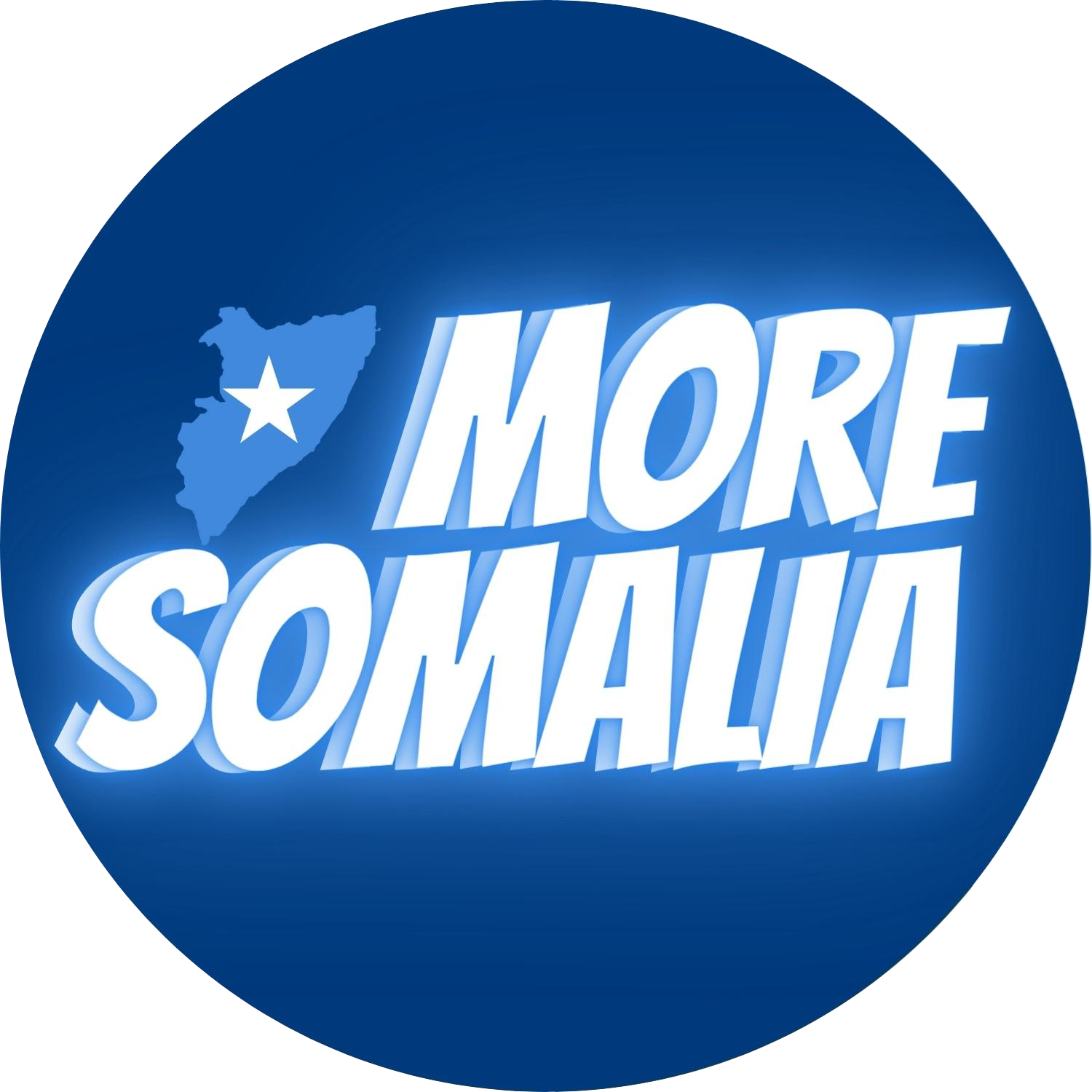

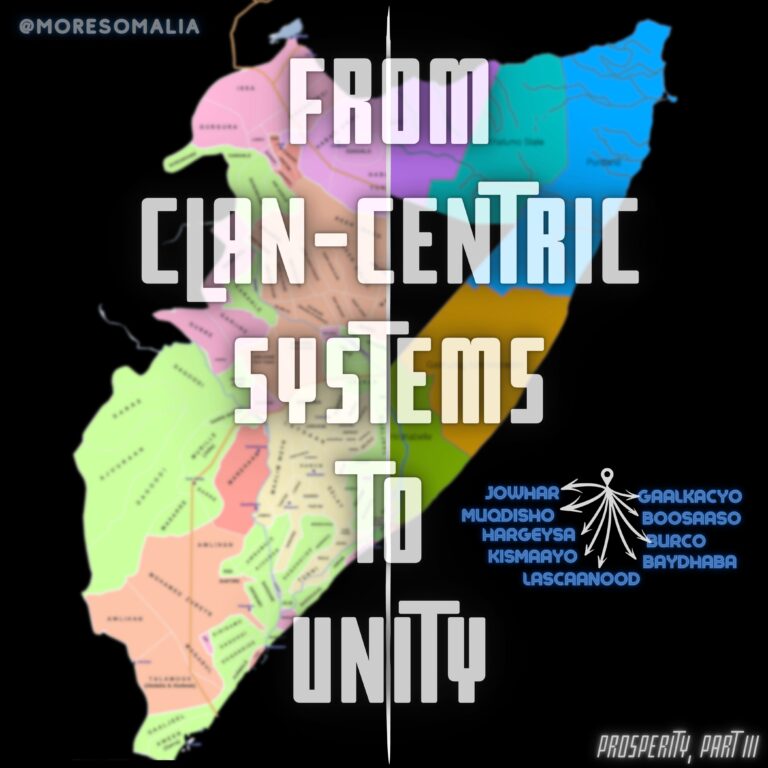
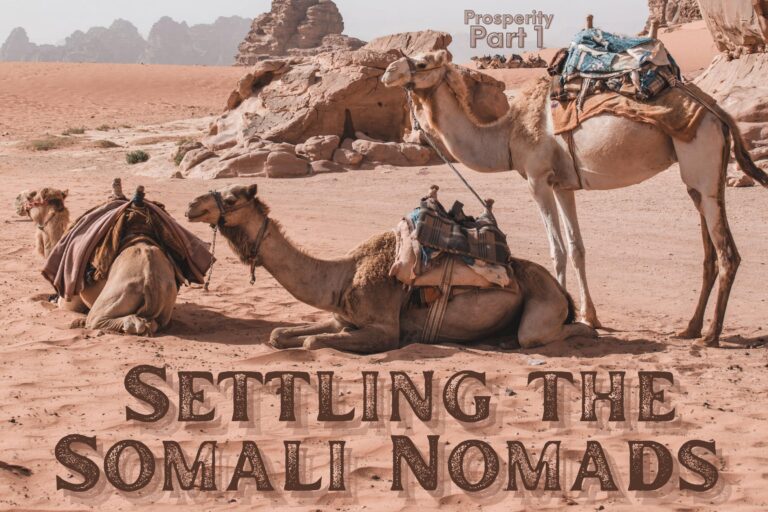
[…] Urbanizing and industrializing Somalia […]
[…] The government planned to be self-sufficient by 1980. Although the focus shifted towards industrialization, the efforts such as forming agricultural cooperatives and expanding irrigation systems were […]